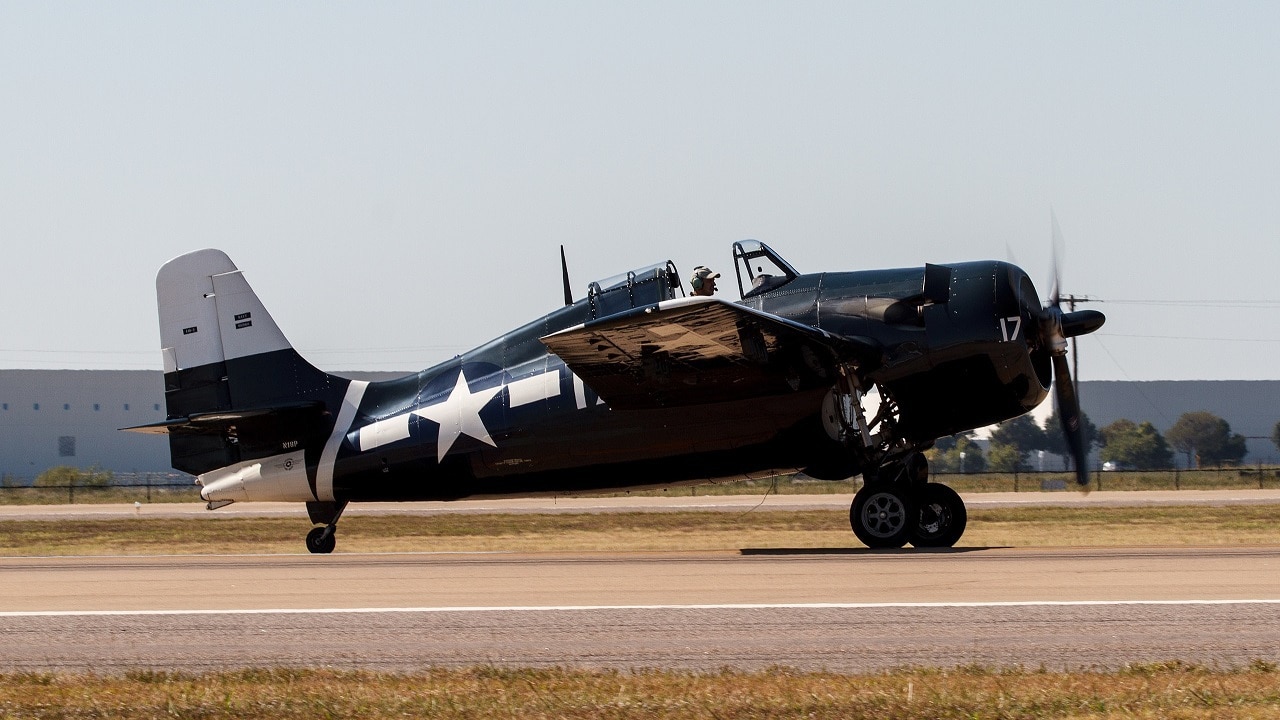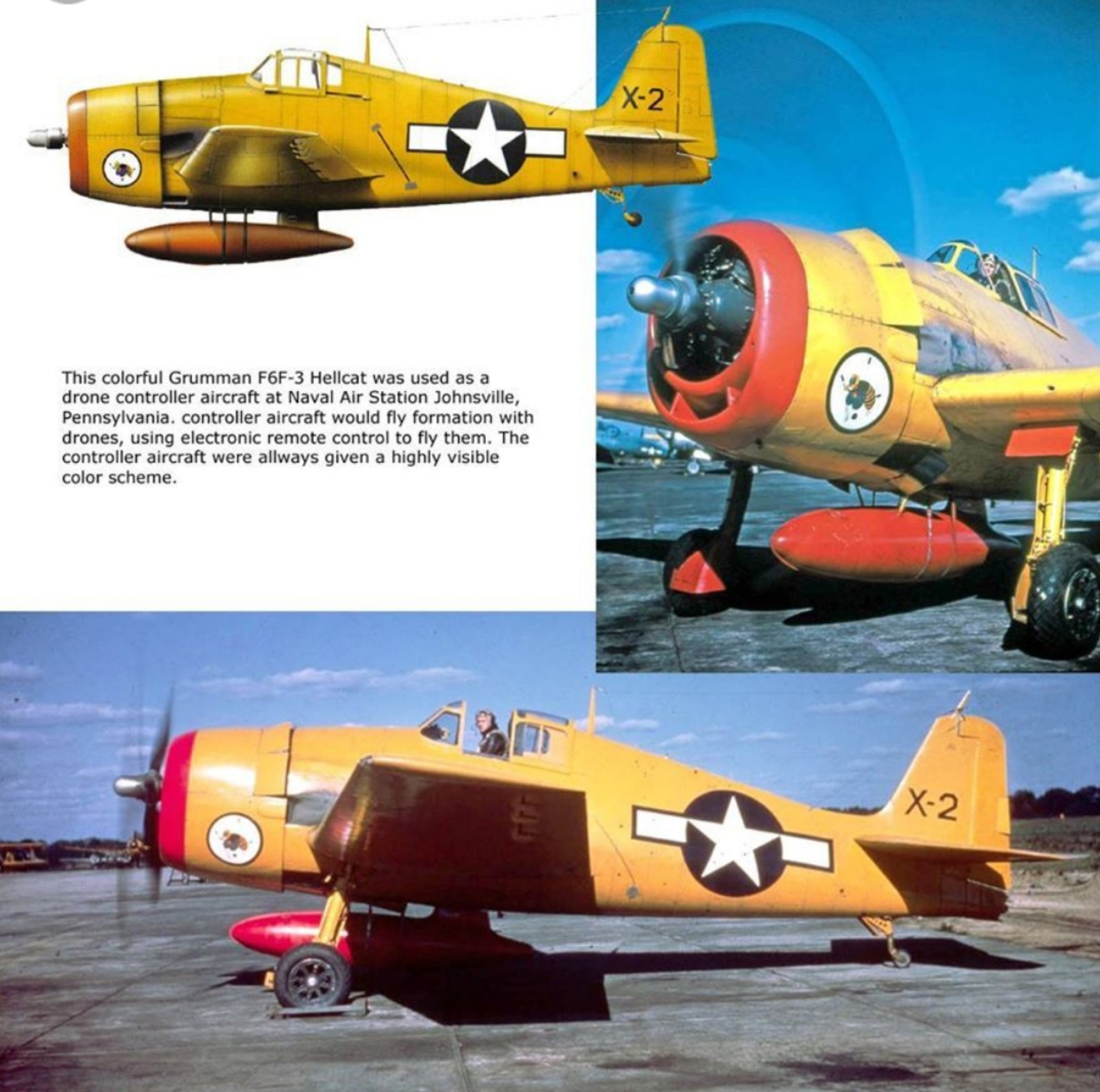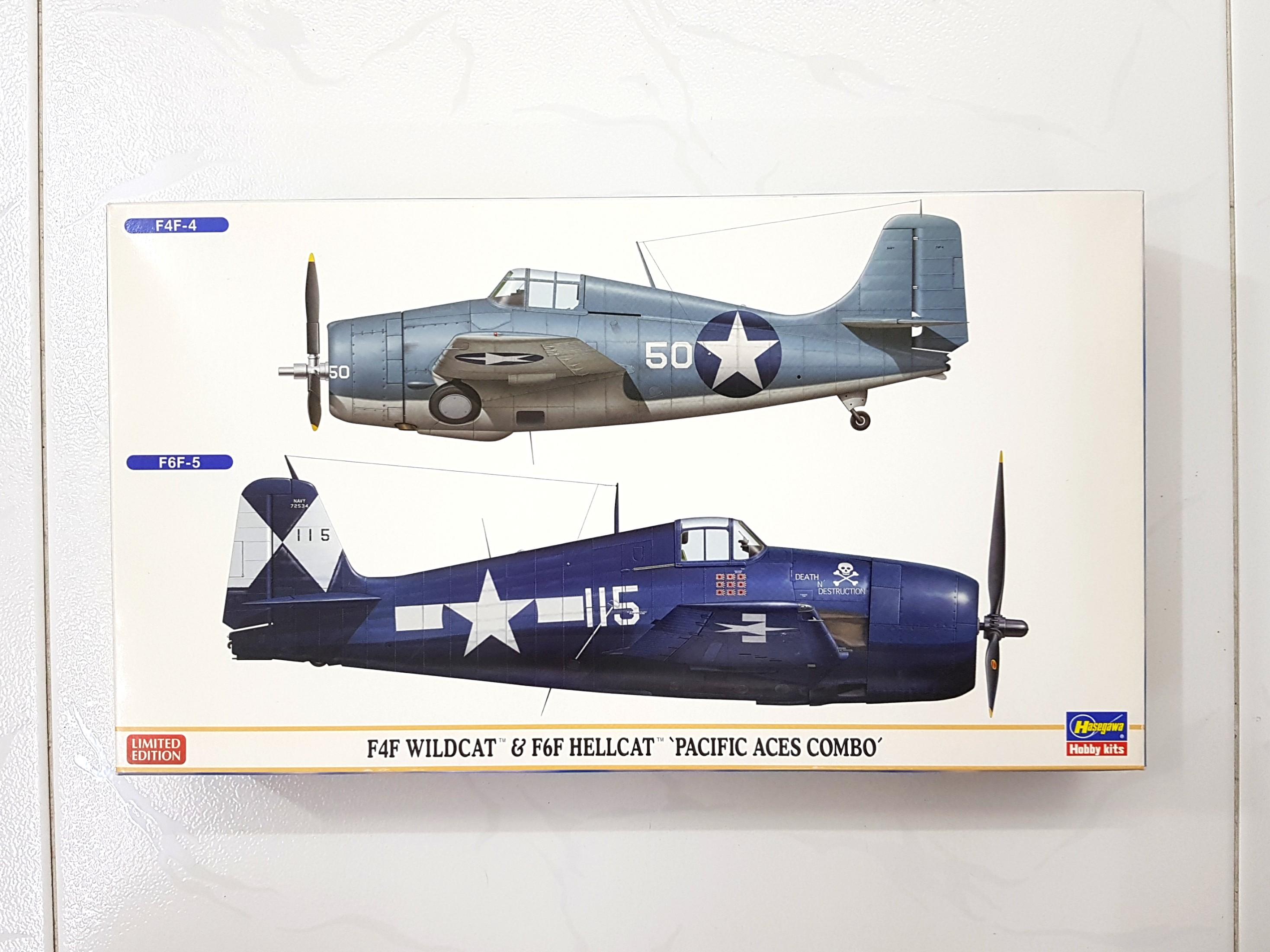Hellcat Vs Wildcat - The Grumman F6F Hellcat was an American fighter aircraft of World War II. It was designed to replace the earlier F4F Wildcat and was designed to compete against the Japanese Mitsubishi A6M Zero, the US Navy's dominant fighter during the latter half of the Pacific War. In this mission, it outclassed its faster competitor, the Vought F4U Corsair, which initially had problems with visibility and landing on carriers.
The F6F was powered by the 2,000 hp (1,500 kW) Pratt & Whitney R-2800 Twin Wasp, used in the Corsair and the United States Army Air Force (USAAF) Republic P-47 Thunderbolt fighter. A bold new design, but still very similar to the Wildcat.
Hellcat Vs Wildcat

The F6F entered combat for the first time in September 1943. It then established itself as a robust, designed carrier-based fighter capable of surpassing the A6M Zero and ensuring air superiority in the Pacific theater. A total of 12,275 were created in just two years.
Grumman F4f Wildcat: The Most Underappreciated World War Ii Fighter?
Hellcats are credited with destroying a total of 5,232 aircraft during their service with the US Navy, US Marine Corps, and Royal Naval Air Force (FAA).
After the war, Hellcats were withdrawn from the US frontline, but radar-equipped F6F-5Ns continued to fight at night until 1954.
Grumman had been working on a successor to the F4F Wildcat since 1938, and the contract for the XF6F-1 prototype was signed on June 30, 1941. The aircraft was originally designed to use the Wright R-2600 twin-cyclone inline, 14-cylinder radial. An engine rated at 1,700 horsepower (1,300 kW) (the same engine as Grumman's new torpedo bomber under development) drove a Curtiss Electric three-wheeled propeller.
The narrow-gauge, hand-built main landing gear retracts into the fuselage inherited from the F3F (a design derived from the Grumman FF-1 fighter jet of the 1930s). . It rotated 90° when the wings were retracted, but retracted and rotated 90° with the main gear, with wheel doors mounted on a full belt covering the upper half of the balloon belt and main gear.
Grumman F6f 5 Hellcat
The wings are mounted low on the fuselage and can be folded by water or by hand, and each of the outer panels of the truck folds back from alignment on a special directional "Sto-Wing" diagonal axis system with Grumman technology similar to the previous F4F. Fold-down storage with top edges diagonally downwards.
In early 1942, Leroy Grumman, along with his chief designers Jake Swirbull and Bill Schwedler, worked closely with the Bureau of Naval Aeronautics (BuAer), who had experience with the F4F;
Developing new fighter aircraft to help counter-zero forces and achieve air superiority in the Pacific theater of operations.

On April 22, 1942, Lieutenant Batch O'Hare visited Grumman Aircraft and spoke with Grumman engineers to analyze the F4F Wildcat's performance in aerial combat against the Mitsubishi A6M Zero.
A Ww2 Usn Grumman F6f Hellcat Fighter Plane At The Tucson Airshow In Arizona Stock Photo
In addition, the front fenders sloped slightly toward the hood, giving the Hellcat pilot a good look.
On April 26, 1942, based on the record of a rematch between the F4F Wildcat and the A6M Zero, BuAer ordered Grumman to install a more powerful 18-cylinder Pratt & Whitney R-2800 twin Wasp radial engine, which was already used in Chance Vought's Corsair. In 1940, the second version was the XF6F-1.
Grumman followed by redesigning and strengthening the F6F's airframe to include a 2,000 hp (1,500 kW) R-2800-10, driving three Hamilton-sized propellers. Grumman estimates that this combination will increase the XF6F-3's performance by 25 percent over the XF6F-1.
The Cyclone-engined XF6F-1 (02981) first flew on 26 June 1942, followed by the first twin-engine XF6F-3 (02982) on 30 July 1942. The first production F6F-3 R-2800-10 took off on October 3, 1942, and the type entered service with VF-9 in February 1943 on the USS Essex.
File:grumman F4f Wildcat F6f 5 Hellcat (39136807090).jpg
The F6F series is designed to break down and safely recover the pilot. A bulletproof windshield was used, and a total of 212 pounds (96 kg) of cabin armor was installed, along with armor around the fuel tank and oil cooler. The fuselage is equipped with a 250 US gal (950 L) self-sealing fuel tank.
Standard armament on the F6F-3 consisted of six 0.50 (12.7 mm) M2/AN air-cooled Brownian machine guns with 400 rounds per gun. A fixed point under the fuselage can carry a 150 US gal (570 L) disposable wall tank, and the planes are then fitted with a separate bomb under each wing in the landing gear. With these and a fixed waypoint, later F6F-3s could increase their total bomb load to over 2,000 pounds (910 kg). Six 5-inch (127 mm) high-velocity air-to-air missiles (HVARs) can be carried - a "zero-length" launcher under each wing.
Two F6F-3 night fighter prototypes were built. 18 F6F-3Es were modified from the Standard 3 and had an AN/APS-4 10 GHz frequency radar mounted in the grille above the right wing, with a small radar scope located in the center of the main instrument panel and radar. Controls mounted on the left side of the cockpit.

The later F6F-3N, first flown in July 1943, was fitted with an AN/APS-6 radar on the fuselage, with a bulb fairing antenna mounted on the front of the outboard right wing as a development of the AN. / APS-4; About 200 F6F-3Ns were produced.
Fm 1 & Fm 2 Wildcat Mk.v/vi Combo Set
The F6F-5 included several improvements, including a more powerful R-2800-10W engine using a water injection system housed in a more streamlined engine cowling, air conditioning controls, and improved visibility. Windshield, flat tempered glass windshield, curved F6F-3 Plexiglas panels and interior screen replace tempered glass.
In addition, the fuselage and tail were reinforced, and with the exception of some early production aircraft, most production F6F-5s were painted an overall bright navy blue.
The F6F-5N night fighter is equipped with an AN/APS-6 radar mounted on the outer starboard side of the wing. A few standard F6F-5s are also equipped with camera equipment for reconnaissance missions as the F6F-5P.
All F6F-5s had a 20 mm (0.79-mm) machine gun (400 rounds each) in each inboard turret, a configuration used only on later F6F-5N night fighters.
Vasileios C. Giftos
Other prototypes in the F6F series included the XF6F-4 (02981, XF6F-1 cycle powered by R-2800-27 and armed with four 20mm M2 cannons), first flown on 3 October 1942; . Projected F6F-4. This version was never produced and 02981 was converted to the F6F-3 production aircraft.
Another experimental prototype was the XF6F-2 (66244), a modified F6F-3 Wright R-2600-15 with a Burman-made hybrid turbocharger, later replaced by the Pratt & Whitney R-2800. -21, also equipped with a Burman turbocharger.
Turbocharging proved unreliable in both engines, while performance improvements were modest. Like the XF6F-4, 66244 was soon converted to the standard F6F-3.

Two XF6F-6s (70188 and 70913) were converted from the F6F-5 and were powered by a 2,100 hp (1,566 kW) Pratt and Whitney R-2800-18W 18-cylinder two-stage turbocharged radial engine. Hamilton-standard four-wheel propeller.
World War 2 Fighter Aircraft Warplane Lot Hellcat Corsair Ace Wildcat P 47 At 6
The XF6F-6 was the fastest version of the Hellcat series, with a top speed of 417 mph (671 km/h), but the war ended before this variant entered mass production.
The last Hellcat entered service in November 1945, with a total production of 12,275, of which 11,000 were built in just two years.
This high production rate was tied to the original design, and only minor changes were required once production began.
Despite the higher speed of the US Navy Corsair, Vought preferred the more maneuverable flight characteristics of the F6F over the F4U Corsair. This superiority in carrier landings was a key success requirement for the Navy. So the Navy released the Corsairs to the Navy, who had great success fighting the Corsairs on land without having to worry about landing on a carrier. Hell was last attacked by American carrier-based fighter aircraft in late 1944 (problems with aircraft carrier aircraft were largely unsolved by the Navy's use of the Palm since 1943).
File:fm Wildcat F6f Hellcat And F8f Bearcat Warbirds In Flight.jpg
In addition to good flying characteristics, the Hellcat is easy to maintain and has a rigid airframe designed to withstand the rigors of regular air operations.
VF-82 Grumman F6F-5 ready for launch from the USS Bunnington off Okinawa in May 1945: Most of the F6F-5s produced were painted a bright navy blue overall.
The Hellcat first saw action against the Japanese on September 1, 1943, when fighters from the USS Indepdce shot down the Kawanishi H8K "Emily" aircraft carrier.

Shortly thereafter, on November 23 and 24, Hellcats targeted Japanese aircraft over Tarawa, shooting down 30 Mitsubishi Zeros.
The Wilder Wildcat — General Aviation News
Gt500 vs hellcat, f4f wildcat vs zero, charger vs challenger hellcat, audi rs7 vs hellcat, hellcat charger vs, tesla vs hellcat, grumman wildcat vs hellcat, 2017 zl1 vs hellcat, hellcat manual vs auto, hellcat vs sti, rs7 vs hellcat, hellcat vs amg
0 Comments